Condensation is a type of phase transition in which a substance directly changes from a gaseous state to its liquid state. There are so many common examples of condensation that we see in our everyday life.
The opposite of condensation is known as evaporation. In other words, when a substance or material directly changes from a liquid state to its gaseous state is known as evaporation.
Moreover, the basic difference between evaporation and condensation is that evaporation is a cooling process and condensation is a warming one.
Editor’s Choice: Evaporation vs Condensation – What’s the Difference?
Examples of Condensation in Daily Life
If you think, you can’t relate to the most common condensation examples in daily life. Well, here is your chance to think again…!!!
- Formation of the water cycle
- Condensation in air conditioning
- Dew on the Grass
- Visible Breadth During Winter
- Steamy mirror in your bathroom
- Condensation in water preservation
Formation of the Water Cycle
The very first one in my list of exclusive examples of condensation in everyday life is the formation of a water cycle. In fact, it’s the most important one for the survival of life on planet Earth. Why?
Because condensation is responsible for the formation of clouds, hence, completes the water cycle. In other words, without the process of condensation, the water cycle or hydrological cycle will cease to exist.
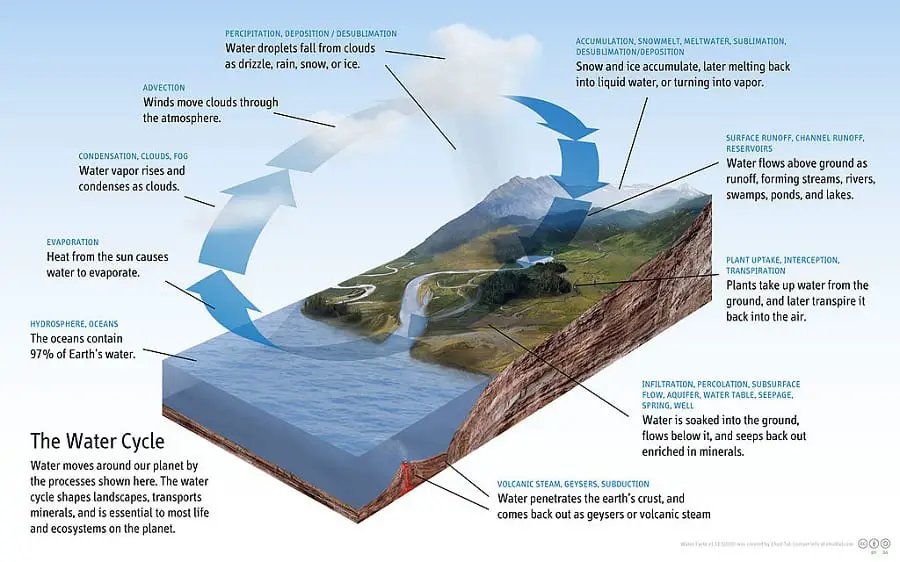
Not to mention, there are others too, that are responsible for the steady completion of the hydrological cycle such as evaporation, sublimation, precipitation, etc. See the above image for a proper understanding.
A water cycle is nothing but the continuous movement of water from within, outside, and, on the surface of the earth. The Sun heats water in the seas and oceans. As a result, water from the ocean and seas evaporates to form water vapor in the air.
When the air is cooled to its dew point and becomes saturated. Water vapor in the air condenses to form clouds. Later, these clouds precipitate back to Earth in the form of rain, snow, or ice pellets.
Condensation in Air Conditioning
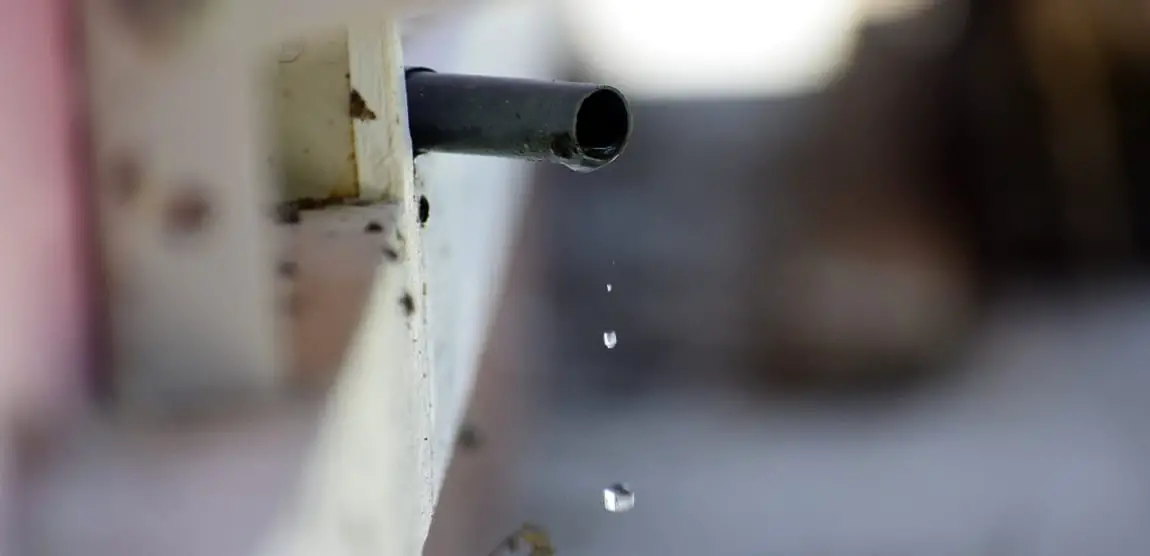
The air conditioner’s evaporator coil cools the warm air that passes over it by absorbing the heat and moisture present in the air. Hence, as a result, water droplets form.
Take a note: It’s not like your system is producing water. On the contrary, they collect it from your surroundings and condense it inside them. Later, these water droplets are ejected through a drain line directly out of your home.
Dew on the Grass
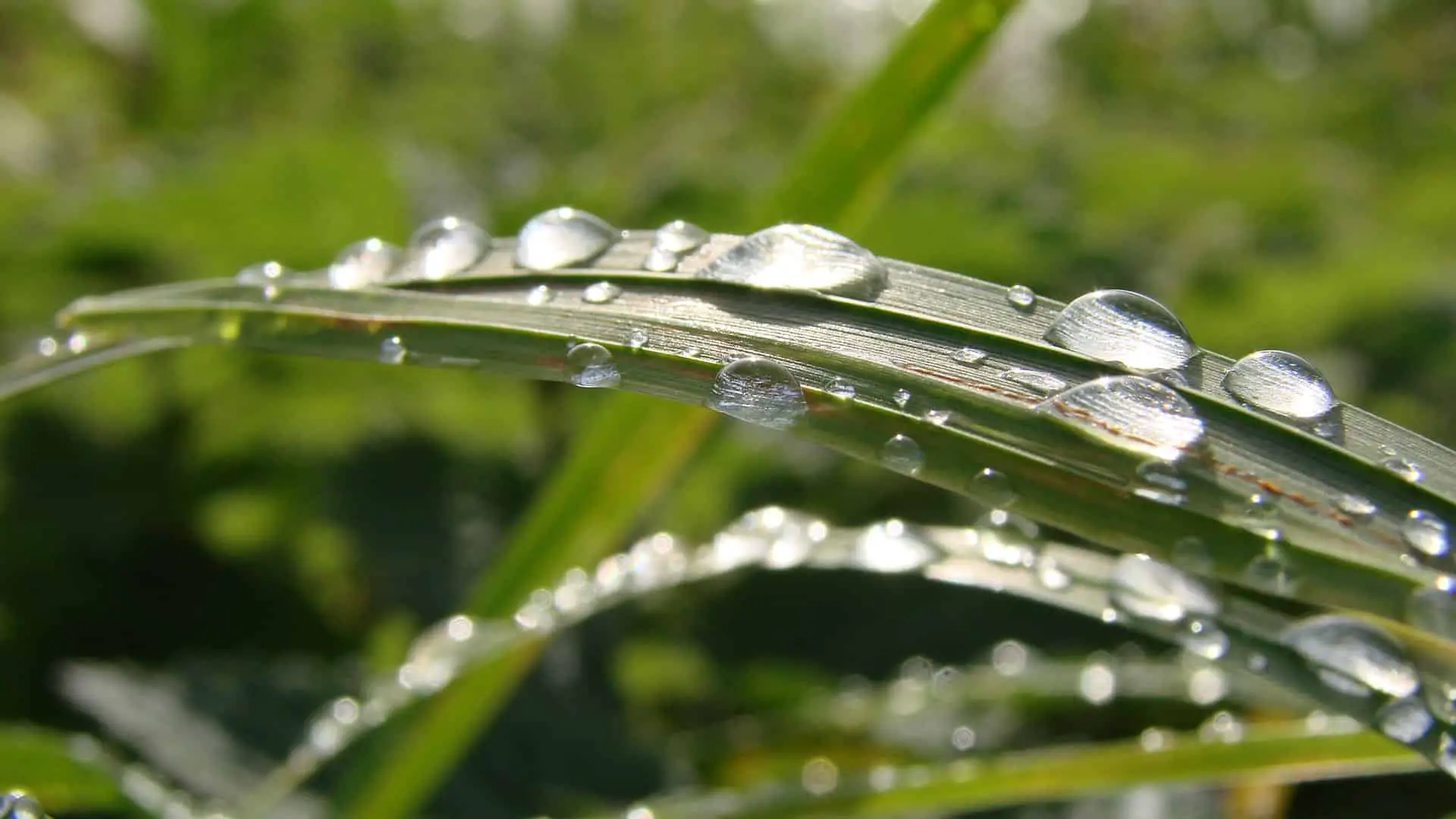
A dew is nothing but water droplets that form in the evening or morning hours due to the process of condensation. Throughout the evening and morning hours, the air near the ground cools off below the dew point.
A dew point is a temperature at which water vapors in the air cool down and become saturated. Hence, results in the formation of water droplets, or in this case, the formation of dew on the grass.
On the contrary, when the temperature dips below the freezing point, instead of dew, a layer of ice is formed due to the process of deposition or desublimation.
Visible Breath during Winter
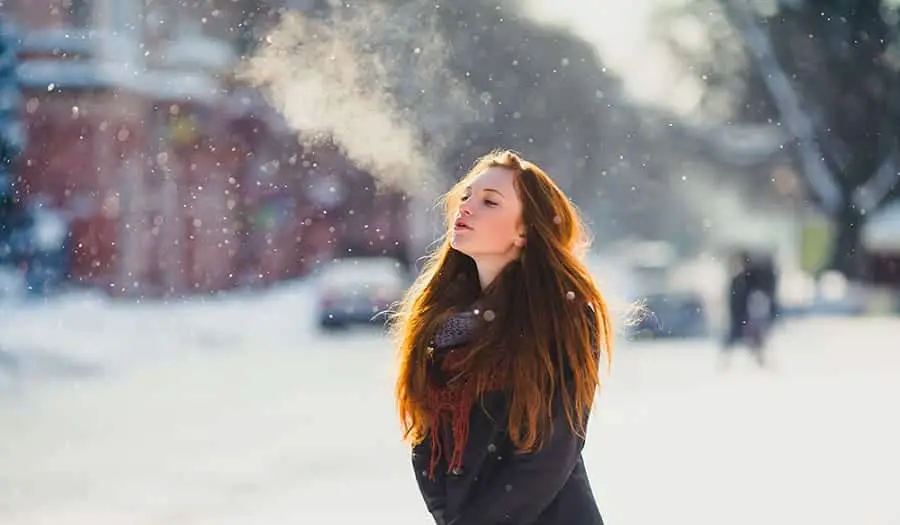
Have you ever wondered why you see your breath on a cold day? EVER??? The answer to this question lies in the vicinity of the definition of condensation.
Not to mention, every human being (almost) knows that our bodies are 70% made up of water.
Therefore, when the conditions are favorable (winters), when one exhales warm and moist vapor on the colder day, the breath hits the surrounding air i.e. cold as well as humid, which results in the formation of tiny water droplets.
Hence, a misty cloud-like appearance can be seen when we exhale. To put it differently, the colder air causes the warm moisture of the breath to condense into tiny water droplets, which we see when we exhale during winter.
Steamy Mirror in your Bathroom

The physics behind the steam mirror is the same as the visible breath during winter. In fact, all of the above-mentioned examples are based on the same physical formula i.e. condensation.
Again, during winter (of course), just stand in front of a mirror, and exhale on it. You will see a misty foggy appearance on the surface of the mirror.
Well, do I need to explain why this happens? Okay! Because of the temperature difference between your inner body and your surroundings, the water vapor in your breath will condense, resulting in a misty foggy appearance.
Just to clarify: in order to get condensed, the temperature of your breath should be greater than the temperature of your surroundings.
Otherwise, if that was not the principal requirement, then, maybe you could have seen in your breath in the summers too, rather than only during winters.
Editor’s Choice: Top 6 Verified Examples of Evaporation in Daily Life
Condensation in Water Preservation
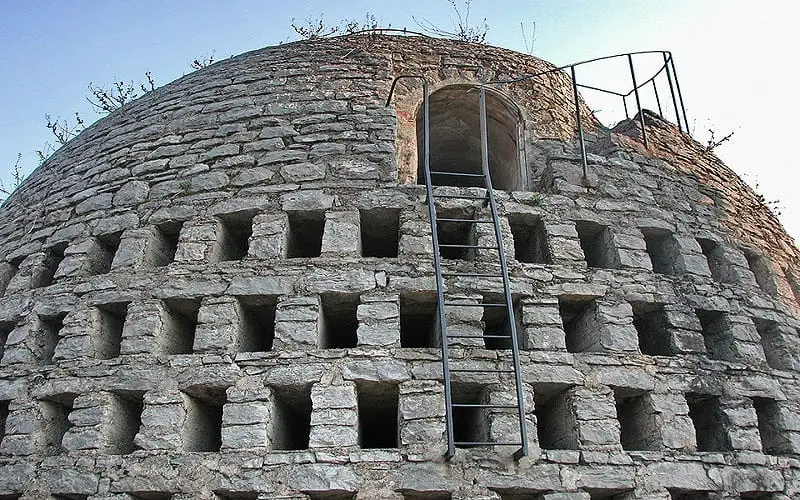
At last, let’s talk about something unnatural and real that in actuality is happening around us. Any guess? Well, I am talking about water scarcity.
Well, there is no denying that humanity is facing a water crisis. According to the report published by the World Economic Forum, the water crisis is one of the largest global risks in terms of potential impact over the next decade.
Not to mention, the most vulnerable will be the people living in and around the deserts. The process of condensation is one of the most useful tools to control the water shortage crisis, especially in desert areas.
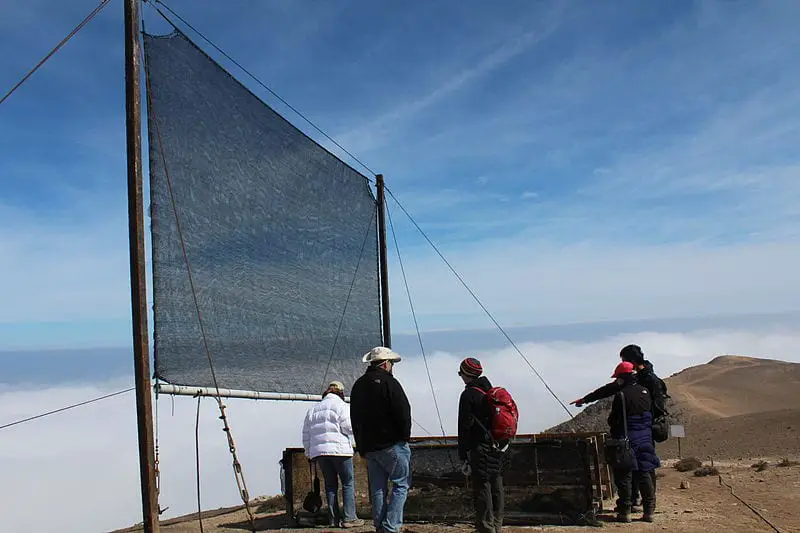
In other words, with the help of condensation, a large quantity of water can be generated for human use. Therefore, people living in water-scarce areas are advised to use air wells and fog fences to collect and store water.
An air well is a device that collects water by promoting the condensation of moisture from the air. Similarly, a fog fence or fog collector is a large piece of vertical mesh net used to collect water by capturing fog droplets.
Some Other Useful Examples of Condensation in Everyday Life
As you can see the condensation examples can be easily bisected into two halves i.e. naturally occurring condensation phenomena and man-made applications of condensation.
Natural Examples of Condensation Everyday Life
Apart from the above-mentioned, the other natural examples of condensation are the sweating of cold drinks, fog on the windshield, clouds in the sky, and, fog in the air, etc.
Man-made Examples of Condensation in Everyday Life
Apart from the above-mentioned, the other man-made examples of applications of condensation are in power generation, thermal management, refrigeration, industrial gas management, obtaining chemical substances, or in water desalination projects, etc.
Frequently Asked Questions
1. What is Condensation?
Ans. Condensation is a phase transition in which a substance directly changes from a gaseous state to a liquid state.
2. What is the rate of condensation?
Ans. The rate of condensation is defined as the number of water vapor molecules that change from their gaseous state to liquid state per second. Moreover, Psychrometry is used to measure the rate of condensation.
3. What is the dew point?
Ans. A dew point is a temperature at which water vapors in the air cool down and become saturated.
4. What is the lowest dew point ever recorded?
Ans. The lowest dew point ever recorded was at Coober Pedy in the South Australia desert. As per the available records, the temperature was 93 degrees. And, the dew point was minus 21 degrees producing a relative humidity of 1 percent.
5. What is the highest dew point ever recorded?
Ans. The highest dew point ever recorded was at Dhahran, Saudi Arabia, located on the Persian Gulf. As per the available records, on July 8, 2003, the dew point was 95 degrees.
You might also like:
- Top 6 Real-Life Gay Lussac’s Law Examples in SIX Minutes
- Top 6 Exclusive Sublimation Examples in Daily Life
- What are the Top 6 Examples of Boyle’s Law?
- Top 6 Applications of Charles Law in Daily Life